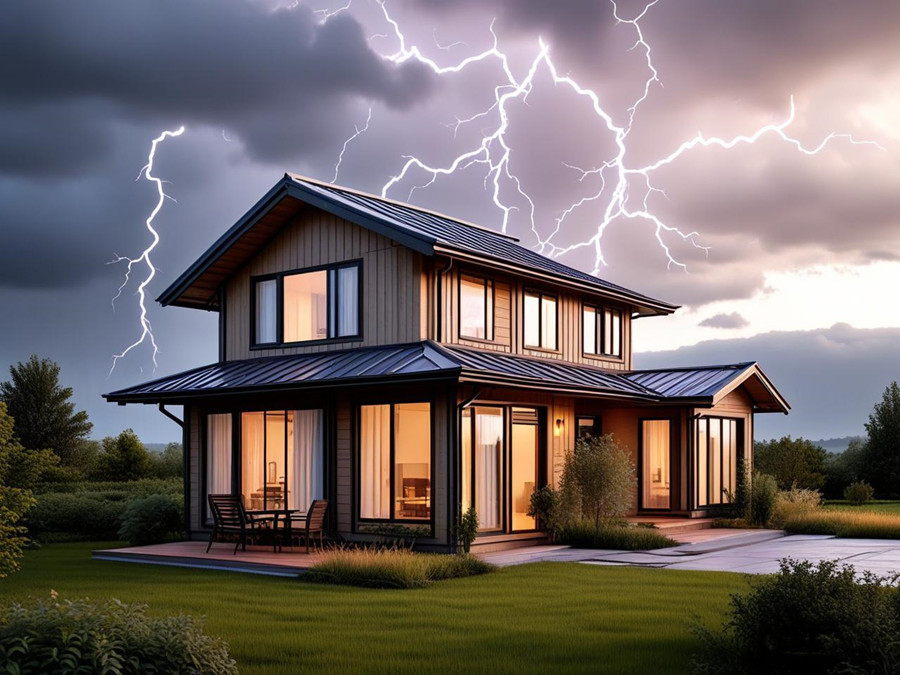Light steel villas, known for their durability, eco-friendliness, and quick construction time, have gained popularity in modern architecture. However, concerns about their vulnerability to lightning strikes often arise due to their metal framework. So, is a light steel villa more prone to lightning strikes compared to traditional brick-and-concrete structures?

1. Lightning Conductivity of Steel Structures
Steel is an excellent conductor of electricity. While this might suggest that light steel villas attract lightning more easily than non-conductive materials (e.g., wood or brick), the reality is different:
- Lightning does not "target" buildings based on material alone. Instead, it follows the path of least resistance from clouds to the ground. Taller structures and those with sharp points are more likely to be struck first.
- If a light steel villa has proper grounding systems (like lightning rods or conductive pathways), the electrical charge can safely dissipate into the earth without causing damage.
2. Safety Measures Against Lightning Strikes
While light steel villas do not inherently attract more lightning than other buildings, proper precautions are essential:
- Installation of Lightning Protection Systems (LPS): A well-designed LPS directs electrical current away from critical structural components into grounding electrodes buried underground.
- Continuous Metal Framework Advantage: Unlike fragmented wooden or masonry structures with gaps that may increase fire risk upon impact, continuous metal framing in light steel villas allows smoother dissipation of electric charges when properly grounded.
3. Fire Resistance & Structural Integrity Post-Strike
One major concern with metal buildings during storms isn't just being struck—it's potential fire hazards from electrical surges:
Modern galvanized/coated steels used in these homes resist corrosion and melting under extreme heat conditions better than untreated metals would; however insulation layers between walls help prevent internal fires spreading quickly through wiring systems if compromised by power fluctuations caused indirectly via nearby strikes rather direct hits themselves!
Conclusion – Are They Safe?
No structure can completely eliminate risks associated with severe weather events like thunderstorms but implementing appropriate safeguards ensures safety regardless whether you live inside conventional concrete residence versus contemporary prefabricated dwelling made mostly out metallic components! Therefore while there’s no evidence suggesting higher likelihood specifically towards attracting bolts skyward compared others around them still necessary take preventive measures mitigate any possible damages arising unpredictable natural phenomena such as sudden discharges atmospheric electricity nearby areas where people reside work daily basis safely comfortably possible all times year round despite seasonal variations climate patterns affecting frequency intensity storm activity globally regionally locally alike!